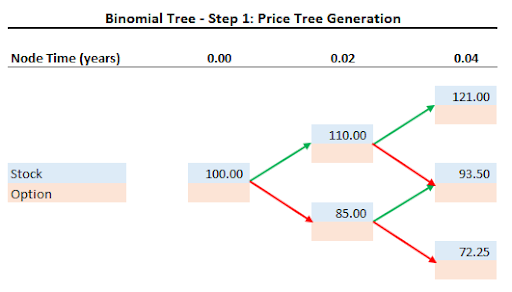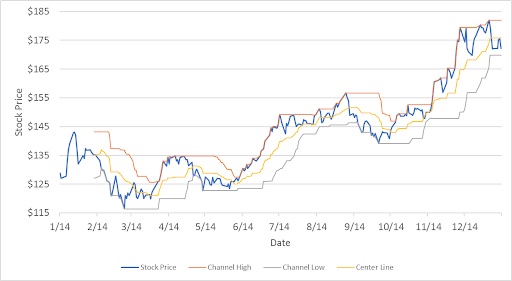Married Put Options Strategy: Defined & Explained
A married put is an options trading strategy wherein an investor purchases an asset and an at-the-money put to protect against a price drop in the shares.
This options strategy works to safeguard the shareholder from sharp declines in the underlying asset price. You can easily calculate your maximum gain, maximum loss, and breakeven with a married put strategy.
What Is a Married Put?
A married put is an options strategy in which you simultaneously buy shares of an asset and purchase an ATM put to protect against a decline in the asset price.
You might execute a married put strategy when you are concerned about a large downward move in the asset price over the short run, but you want to own the asset for a longer timeframe.
Recommended: How to Trade Options
How Does a Married Put Work?
A married put works by protecting the investor from a decrease in the price of an asset. With a married put, you are still exposed to a loss, but losses are limited based on the strike price of the put option purchased.
At the same time, a married put allows you to participate in upside in the underlying shares since the most you can lose with the put option is the premium paid, while your long asset position has unlimited upside.
At the money put options can be expensive insurance. The premium you pay for the downside protection can make the strategy prohibitively expensive. Put option pricing depends on many variables, known as the options Greeks. A married put options strategy can work well with low-volatility stocks if you are worried about upcoming bad news on the company.
Maximum Profit
One of the main advantages of a married put options strategy is that you retain unlimited upside potential since you are long the asset and the most you can lose on the put option is the premium paid.
Breakeven
A married put’s breakeven is a straightforward calculation. It is the price you paid for the asset plus the premium paid to acquire the put option. The asset must rise by more than the amount of the premium for the strategy to exhibit gains.
Recommended: Call vs. Put Options: The Differences
Maximum Loss
This is where the married put strategy really shines. The maximum loss is the cost of the asset minus the put option’s strike price, plus the premium paid. The most you can lose with a married put is limited.
Finally, user-friendly options trading is here.*
Trade options with SoFi Invest on an easy-to-use, intuitively designed online platform.
*Check out the OCC Options Disclosure Document.
Married Put Example
It is helpful to run through a married put example to show the benefits and downsides of this options strategy. This can help when comparing it against other options strategies.
Let’s say you want to own shares on XYZ stock currently priced at $100. You buy 100 shares for a total of $10,000 and an at the money put option contract for $5. Each option contract covers 100 shares, so the total premium is $500.
Your breakeven is $105. That is the per share cost of the stock plus the premium paid. If the stock is unchanged at the expiration of the options contract, you will have a loss of $5 on the strategy.
Your maximum profit is unlimited since the stock has no upside cap. If the stock rallies to $120 by expiration, you have a $15 gain. While the maximum profit is unlimited, it will be lower than if you’d purchased only the shares due to the cost of the put.
Your maximum loss is $5, the put option premium. In this example, your maximum loss occurs at or below a $95 stock price. You can close the trade by selling the stock and selling-to-close the option. Alternatively, you can sell-to-close the put or let it expire and continue to hold the stock.
Note: The calculations above disregard transaction costs, but due to the purchased puts being at the money these costs can add up.
💡 Quick Tip: Options can be a cost-efficient way to place certain trades, because you typically purchase options contracts, not the underlying security. That said, trading options online can be risky, and best done by those who are not entirely new to investing.
Pros and Cons of Married Puts
| Pros | Cons |
|---|---|
| Offers downside protection | The put option’s premium might be prohibitively expensive |
| Offers upside participation | Commissions could be high on the put option |
| Works well on low volatility assets when you believe is a near-term risk of a share price decline | Liquidity on the put option could be weak |
Married Puts vs Covered Call
| Married Puts | Covered Call |
|---|---|
| Purchase an at the money put and the underlying asset simultaneously | Sell a call on an asset you already own |
| Long the asset and long a put option | Collect a premium to enhance a portfolio’s yield |
| Exit the trade by selling shares and selling-to-close the put option | Roll out by buying-to-close and then selling-to-open another call. |
Strategies Similar to Married Puts
There are several options trading strategies similar to married puts. Let’s investigate those.
Protective Puts
A protective put strategy is very close to a married put strategy. The difference is that you already own the asset with a protective put trade. With a married put, you simultaneously buy the asset and put.
Long Calls
A married put behaves the same way as a long call. You own the asset with a married put strategy, but a long call position does not entail owning the underlying shares. Long calls differ from naked calls since you buy-to-open a call option contract in a long call strategy while you sell-to-open calls without owning the underlying shares in a naked call play.
Call Backspreads
A call backspread is a bullish options strategy wherein you sell lower-strike calls and a greater number of higher-strike calls at the same expiration on the same asset. A call backspread offers unlimited upside. You would execute this complex options strategy when you are extremely bullish on a volatile asset. Call backspreads are also known as ratio volatility spreads.
The Takeaway
A married put options strategy is when you purchase an at the money put option and shares of the underlying asset simultaneously. It is a way to limit risk when you want to own shares in a company.
Qualified investors who are ready to try their hand at options trading, despite the risks involved, might consider checking out SoFi’s options trading platform. The platform’s user-friendly design allows investors to trade through the mobile app or web platform, and get important metrics like breakeven percentage, maximum profit/loss, and more with the click of a button.
Plus, SoFi offers educational resources — including a step-by-step in-app guide — to help you learn more about options trading. Trading options involves high-risk strategies, and should be undertaken by experienced investors.
FAQ
Is a married put the same as a covered put?
A covered put is the opposite of a married put in that you are short the asset and short a put option in a covered put trade. With a married put, however, you buy the put and the asset at the same time.
Is a married put a good strategy?
A married put can be a good strategy if you want insurance on a new asset position. It is a bullish strategy used if you are worried about potential near-term risks in the asset. By owning a protective put, you have downside protection while still being able to participate in asset price appreciation. You have the right to receive dividends and participate in shareholder votes by owning the stock, too. The downside is that you must pay a premium to own the put option.
What is the difference between puts and calls in options trading?
Puts and calls are two option types. Puts give the holder the right but not the obligation to sell shares of an asset at a specific price and at a specified time. Calls give the holder the right but not the obligation to buy shares of an asset at a specified price and time.
Photo credit: iStock/Renata Angerami
SoFi Invest®
INVESTMENTS ARE NOT FDIC INSURED • ARE NOT BANK GUARANTEED • MAY LOSE VALUE
SoFi Invest encompasses two distinct companies, with various products and services offered to investors as described below:
Individual customer accounts may be subject to the terms applicable to one or more of these platforms.
1) Automated Investing and advisory services are provided by SoFi Wealth LLC, an SEC-registered investment adviser (“SoFi Wealth“). Brokerage services are provided to SoFi Wealth LLC by SoFi Securities LLC.
2) Active Investing and brokerage services are provided by SoFi Securities LLC, Member FINRA (www.finra.org)/SIPC(www.sipc.org). Clearing and custody of all securities are provided by APEX Clearing Corporation.
For additional disclosures related to the SoFi Invest platforms described above please visit SoFi.com/legal.
Neither the Investment Advisor Representatives of SoFi Wealth, nor the Registered Representatives of SoFi Securities are compensated for the sale of any product or service sold through any SoFi Invest platform.
Options involve risks, including substantial risk of loss and the possibility an investor may lose the entire amount invested in a short period of time. Before an investor begins trading options they should familiarize themselves with the Characteristics and Risks of Standardized Options . Tax considerations with options transactions are unique, investors should consult with their tax advisor to understand the impact to their taxes.
Financial Tips & Strategies: The tips provided on this website are of a general nature and do not take into account your specific objectives, financial situation, and needs. You should always consider their appropriateness given your own circumstances.
SOIN1221528

















